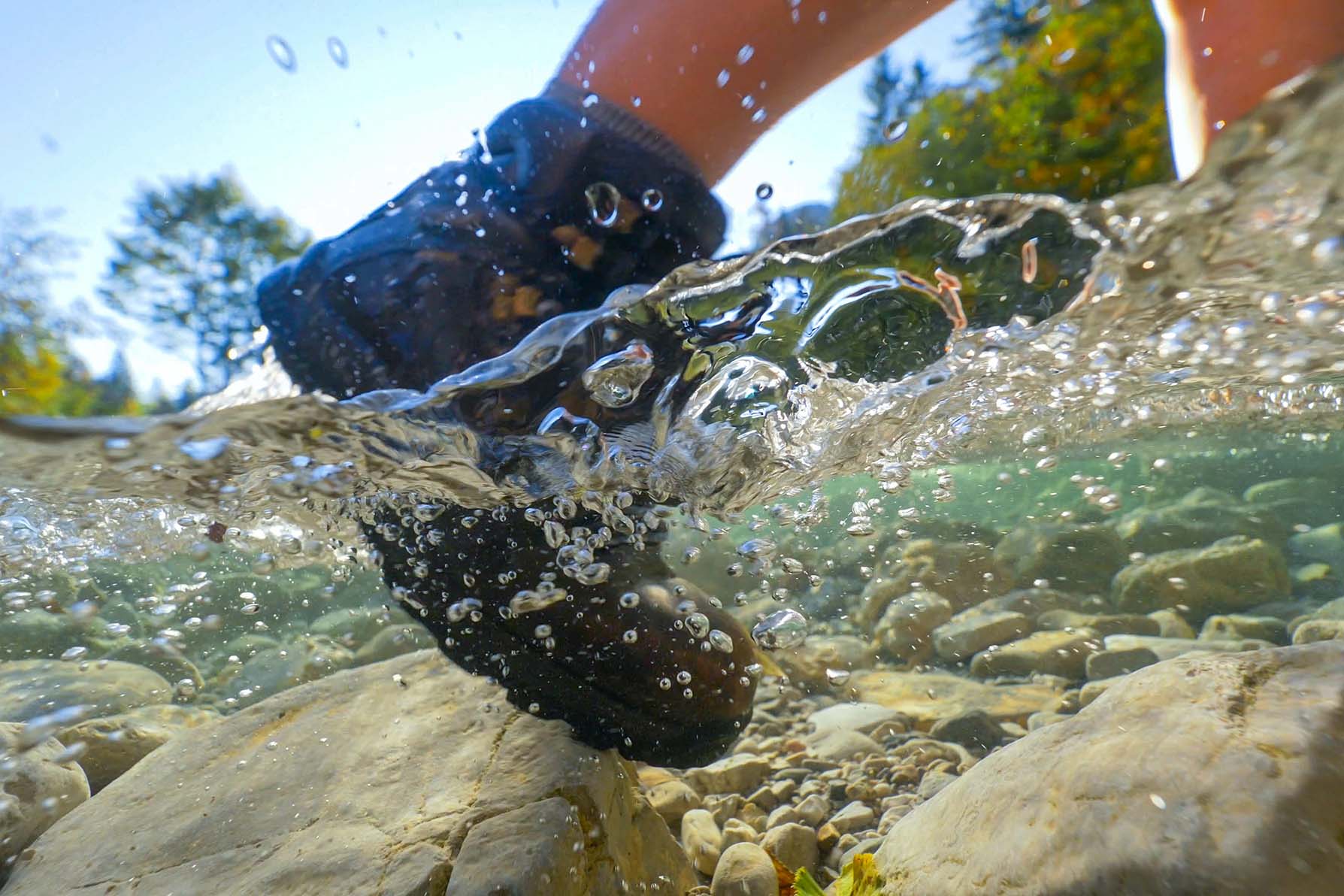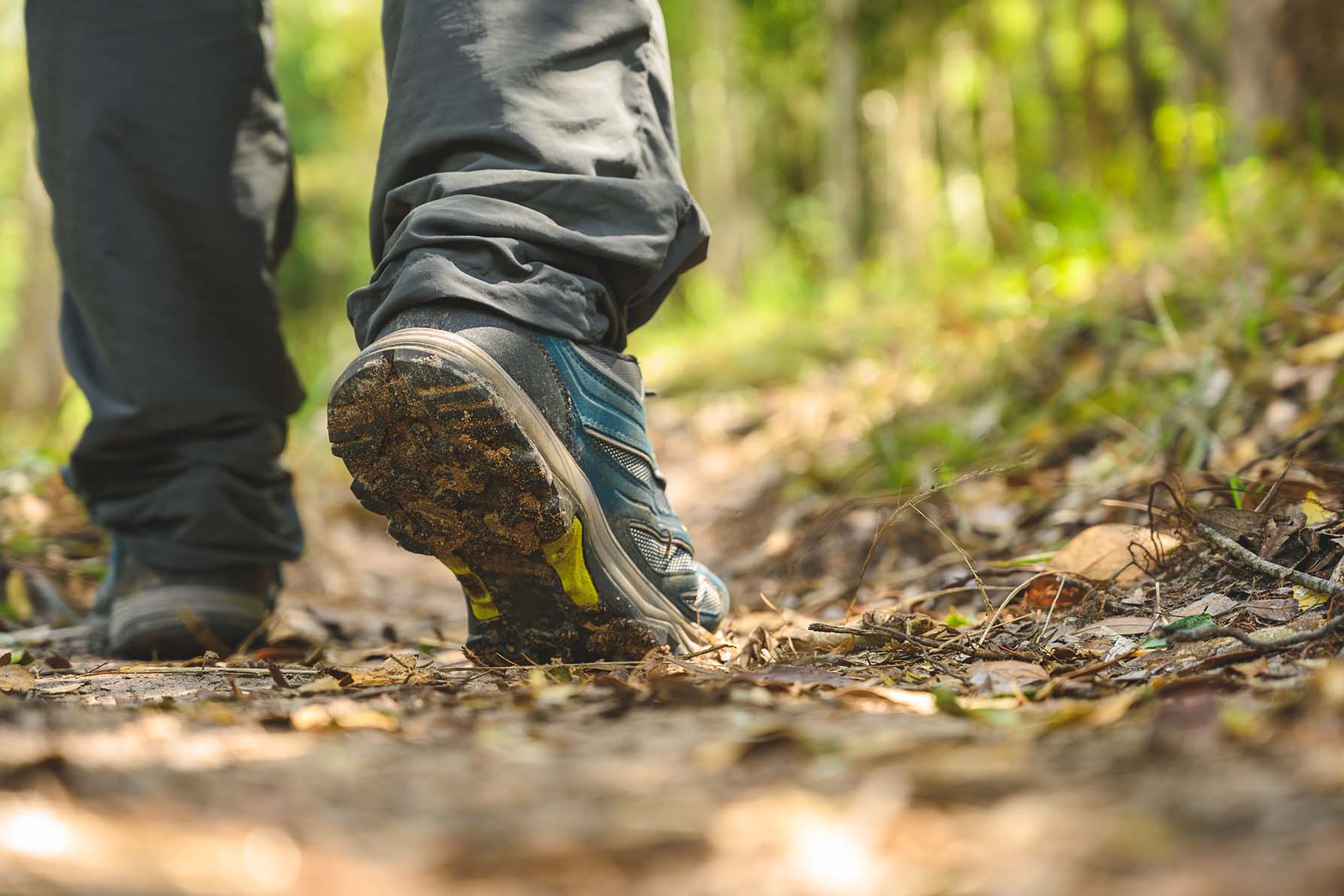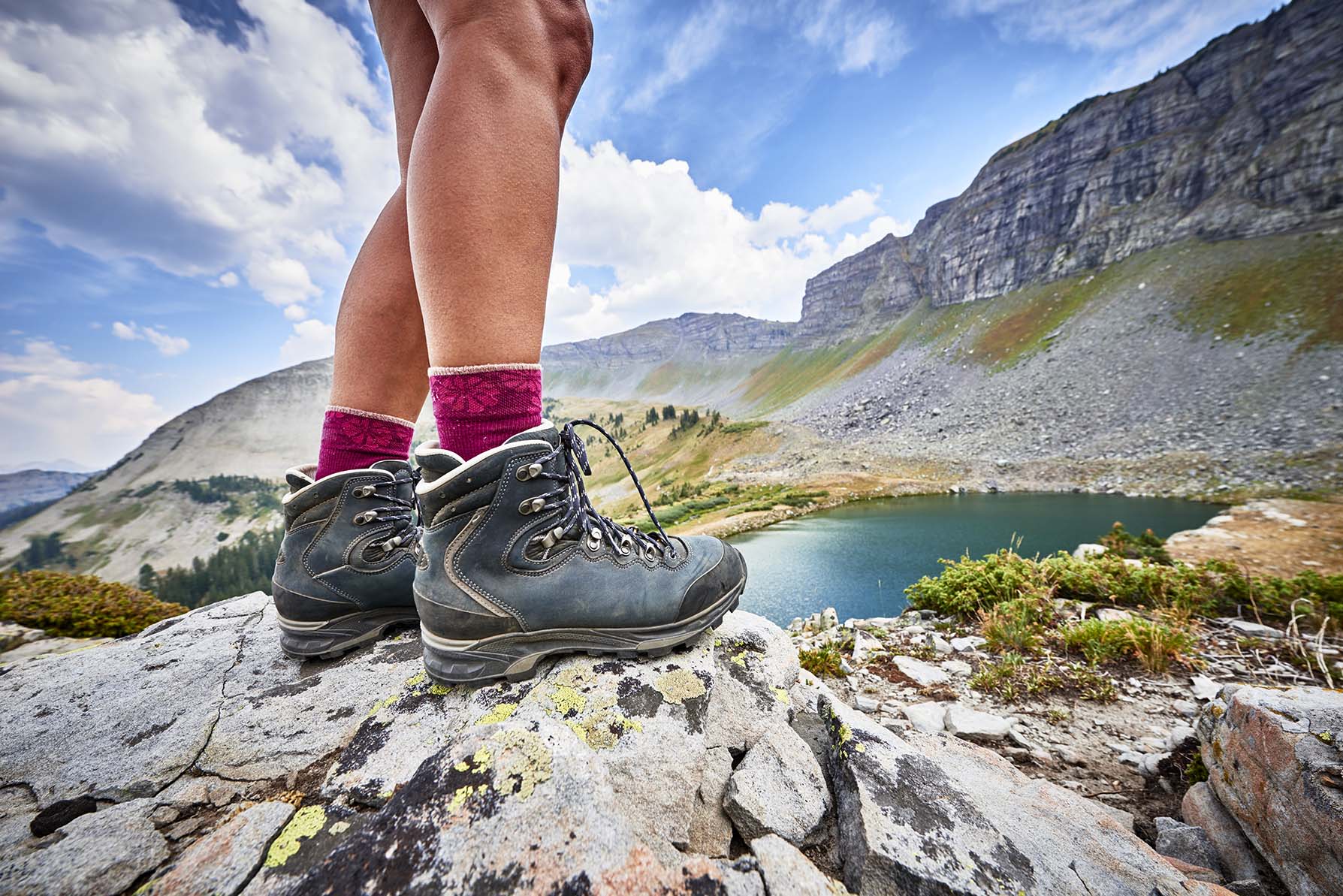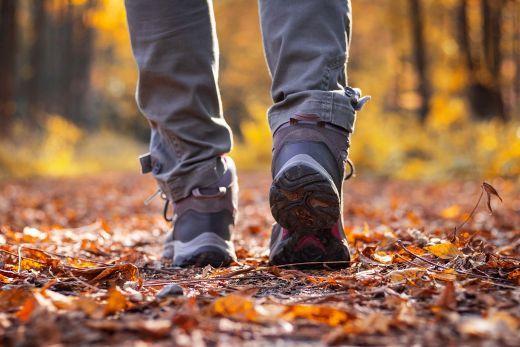New hikers and those looking to replace an old pair of hiking boots often ask the question “Do I need a pair of boots for a multi-day hike?” The answer, as with most things, is that it depends. Today there’s a general preference for trail shoes. Some hikers prefer them for their light weight while others like how comfortable they feel right out of the box. But boots still have their place, and understanding the pro and cons of the different types of footwear can help you make the most of your choices. This article does just that, explaining what is driving the general trend towards trail shoes and then offering some guidance on when to go the whole hog and lace up a pair of boots.
Factors affecting footwear choice
Experience level
If you’re new to the whole hiking thing and aren’t particularly surefooted, the wide, thick soles on hiking boots can provide more support and protection. This added security might be just what you want on longer hikes, where flagging energy levels can result in sloppier foot placement. If, on the other hand, you’re a seasoned hiker, your feet are probably tough enough and nimble enough to go without the extra support.
Pack weight
There are two reasons you might want the extra support and protection of a pair of boots when carrying a heavy pack. Firstly, a full pack makes every step a little heavier, and the thick soles of a boot will do a better job of protecting your feet and preventing fatigue. And secondly, there’s a higher chance of you placing a foot badly when your balance is being affected by an extra 15kg on your back.
Terrain
Boots might be the obvious choice for sketchy trails, but many off-trail focussed hiking shoes will hold their own on rough terrain. Water and cold are actually bigger factors in determining the best footwear. Boots are an attractive option if you want to keep your feet dry and warm, but this approach only works if you’re only occasionally sinking your boots into damp ground – and nothing deeper than your ankles. Facing miles of squishy marshland? Wet shoes will weigh less than water-logged boots and will dry out faster.

Distance
Lugging a heavy pack over rough terrain day after day will take a toll on your feet. Would it be enough to warrant a pair of boots? That depends on how well conditioned your feet are. If it’s your first time attempting a long hike over challenging terrain, I recommend going with a pair of boots. If they prove to be overkill, you can dial down the footwear next time. Something else you should consider is how long your footwear needs to last. If you want to do a thru-hike in a single pair of footwear, boots are a better option.
Speed
Trail shoes are much lighter than boots, and their soles are more flexible, which allows for an easier and more natural gait. As a result, trail shoes are better for maintaining a brisk pace, and they’ll contribute less to fatigue over long distances. If you’re looking to cover a lot of ground every day, trail shoes will do a better job in most conditions, and they will be better for scrambling when the terrain steepens.
Trail shoes
Hiking shoes and trail running shoes are not the same thing. Running shoes are designed to be light and fast while hiking shoes are designed to be more supportive. The latter generally have stiffer lasts and thicker midsoles, putting them somewhere between hiking boots and racy trail runners. Does that mean that you can’t hike in trail running shoes? No. You obviously can, but know that your feet are going to get worked harder in a pair of light shoes. Unless you’re a runner or a seasoned hiker, it’s best to start with more shoe and slim down as you become more experienced.
Breathability
Boots don’t breathe, and while they’ll help keep your feet dry in cold, wet conditions, they’ll do exactly the opposite in warm weather. With nowhere to go, sweat will soak your socks and turn your footwear into a biohazard zone. Trail shoes, on the other hand, are much more breathable, and are a better option in warmer weather.
All-terrain versatility
With their thick lugs, boots provide good traction even in scree, mud, and other types of unstable substrate. But they’re generally not as flexible or sensitive as trail shoes, and aren’t particularly well suited to technical scrambling. Shoes are actually better for gripping on a range of surfaces and inclines, and they will outperform boots on many types of terrain.
Out of the box comfort
Besides being light, trail shoes are also a lot more comfortable from the get-go and require a lot less breaking in. If you’ve just decided that you need a new pair of footwear for a hike starting in a week, a pair of trail shoes is going to be a much safer choice (provided that you aren’t going to be hiking in wet snow or muddy slush).
| Pros | Cons |
|---|---|
| Breathable – better for warm-weather hikes | Less supportive |
| Lightweight & flexible | No as durable as boots |
| Versatile | Lacks waterproofing |
| Little to no break-in period |

Hiking boots
Boots come in a variety of styles, but the most important distinction is between hiking boots and mountaineering boots. The latter are stiffer, beefier, and designed to take crampons. These are great for hiking in snow and for carrying a mammoth pack, but for most hikes they’re overkill. A pair of allround hiking boots should be flexible enough to allow a full stride but supportive enough to stave off foot muscle fatigue when hiking with a pack.
Support & protection
The ankle support provided by boots is probably not as effective as manufacturers have claimed (There’s not much evidence to support this). But a boot’s stiff sole does provide a stable base for your foot. When your foot muscles grow tired, the midsole support offered by a pair of boots makes it easier to keep on going. Boots also provide more protection for your toes and are generally more forgiving of poor foot placements.
Waterproofing
In very wet conditions, no footwear is going to keep your feet completely dry, but on damp, squishy ground where you’ll sink no deeper than your ankles, properly maintained boots will do a much better job of keeping the wet out. This is especially important when hiking in very cold and wet conditions where it’s essential to keep your feet dry. You can help your boots retain their waterproof properties by applying a waterproof spray or wax regularly.
Breaking in
Boots have to be broken in, but the amount of time or mileage needed to break them in will differ from model to model. Light hiking boots might feel okay after just a few days, but most leather boots will need at least several days of solid hiking before they start to conform to your feet. Ask the guy at the store how much wearing-in a pair of boots will need, and don’t underestimate the importance of this process. Setting off on a long hike with brand new pair boots will almost definitely result in blisters and much pain.
| Pros | Cons |
|---|---|
| Support & protection | Heavier & bulkier |
| Warmer – better for cold-weather hikes | Not breathable |
| Waterproofed (to a point) | Require breaking in |
| Durable |

What to wear when
Season and weather
In snowy conditions go with a pair of boots, especially if it’s slushy. They’ll do a better job of keeping your feet dry and warm. Boots are also easier to attach microspikes to if you need the extra grip in icy conditions. For most other conditions, trail runners are usually a better option, barring a few other factors (less support). Your feet won’t get as sweaty, walking will be less tiring, and your shoes will dry faster if you trip into a stream or bog.
Distance, terrain and pack weight
Besides weather, your desired level of protection should also influence your choice of footwear. If you’re new to hiking and aren’t particularly sure-footed, you can benefit from the beefiness of boots. The same applies if you’re hiking heavy loads over long distances day after day and you want the extra midsole support and all round protection. The only time I wear boots in temperate conditions is when carrying a pack heavier than 17 kilos.
Get more advice from this gearhead
After all this careful consideration, the only way you can know for sure what works for you is to lace up a pair and go for a hike. And remember – if a new purchase doesn’t work for their original purpose, they’ll probably shine in another role. Just make sure that they fit. When buying a pair of boots or shoes for the first time, always try them on in-store first.
